2022 Week 1: Government/Policy
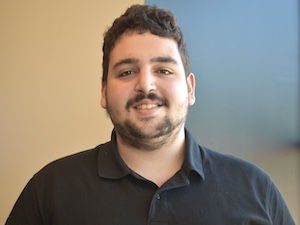 Kerim Bali | Office of Councilmember Mark Conway
Kerim Bali | Office of Councilmember Mark Conway
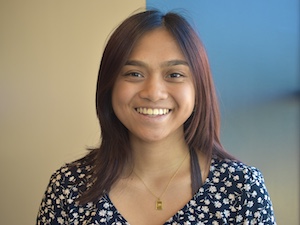 Mikayla Chua | Office of Councilmember James Torrence
Mikayla Chua | Office of Councilmember James Torrence
The first day of work was in-person, which was not reflective of how the majority of the summer was meant to be virtual. Nonetheless, it was still great to feel confident in commuting to City Hall and getting meeting my supervisor, co-workers, and Councilmember Torrence in person. On the way to work, I realized that I haven’t worked a job or internship in-person before, so I was a bit daunted. I imagined that being in-person and working from 9-5 would put more pressure on a person to be constantly engaged. However, being in person the first day probably helped me get through with my onboarding process the most. I right away understood the dynamic of the office and found that they were one big family. They trusted each other to be honest with how they were feeling and very communicative about how to get something done. That is something that I respected in Councilmember Torrence, his pragmatism.
Onboarding is always a difficult process for me. I consider myself a slow learner, and so I always feel that I am not asking enough questions. As the youngest in the office, I also feel the least knowledgeable, which can be true in a sense. But I’m realizing that no one is concerned about that, and even if they were, they understand that we do not know everything and they do not expect us to. My supervisor, Kirsten, understood this wholly and gave me the task of listening to last week’s City Council Budget Hearings to get my bearings on the agencies/departments, their operations, names to important faces, and how the councilmembers advocate. Also, working with a new co-worker who I could collaborate and share the experience with has immensely helped me in my learning curve. Kirsten also reminded us that just how we want to empower constituents, we should also feel empowered ourselves in the office so that we are not constantly looking for others for direction or change. That we do not need feel we need permission from her or only doing the things she asks us to. I took this advice to heart and is a great reflection of instilling what I learn into what I do.
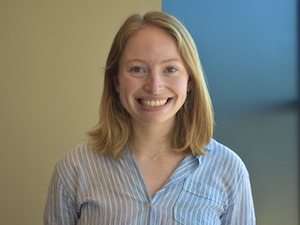 Sigrid Edson | Mayor’s Office of Immigrant Affairs
Sigrid Edson | Mayor’s Office of Immigrant Affairs
My main focus for my first week at MIMA was reading up on the history and goals of the office, as well as beginning to gain familiarity with existing information on the immigrant and limited-English-proficient communities in Baltimore. In doing this background work, I encountered two main surprises that shouldn’t have been surprises: One, MIMA has existed for a very short amount of time and has had an extremely small staff for most of that time, and two, MIMA has very little compiled data about Baltimore’s immigrant and LEP populations.
I knew about MIMA’s founding from hearing its founder, Catalina, speak during orientation, but what shocked me more when reading about it this past week was the question of what resources or supports immigrants in Baltimore had access to prior to its founding.
The second surprise — the problem of data — should have also surprised me less. Now that I am the person responsible for using the Census and the American Communities Survey to compile and present demographic data, I am aware that the data from these surveys doesn’t magically appear in a convenient format in the inboxes of government agencies after collection. Organizations have to pay someone to download and sift through the spreadsheets, picking out information that may be useful to devising, funding, and implementing programs to help constituents. Still, problems like undocumented status, language access, unstable housing, and others mean that the data we have access to may be limited in their accurate representation of groups that might most benefit from MIMA support. As I dig deeper into MIMA’s programs and information about the city’s immigrant communities, one goal I have is to keep these limitations in mind.
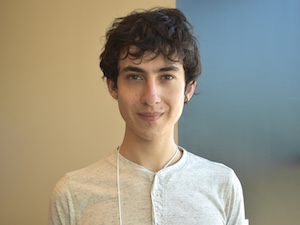 Carlos Gamboa | Office of Councilmember Zeke Cohen
Carlos Gamboa | Office of Councilmember Zeke Cohen
On Tuesday, I spent my afternoon in the auditorium of Mergenthaler Vocational-Technical High School, informally called “Mervo,” photographing the second annual Destiny’s Dream Scholarship ceremony. The day before, my supervisor had asked me if I had any experience in photography, as the office needed somebody to take pictures at the event. Not only is photography a long-time hobby of mine, but it turned out that the office’s camera was the same model as my personal camera. If that wasn’t motivation enough, I was designated to work from home that day anyway, so I figured that it couldn’t hurt to get some time away from my computer and in the community.
During the car ride over to the school with my supervisor, I read up about the scholarship and its namesake, Destiny Harrison. Destiny was a Mervo graduate, having pursued a track in cosmetology; she later graduated from Bowie State University with a degree in Business Administration. When she entered the beauty industry, she was met with overwhelming success, opening four salons in rapid succession. Then one day, while working in one of her salons, she was shot and killed in front of her young daughter. The two men who murdered her made off with three thousand dollars of merchandise. The Destiny’s Dream Scholarship grants a thousand dollars to Baltimore students pursuing cosmetology, just like Destiny did.
I got out of my supervisor’s car and walked into Mervo, where I was greeted by several guards and a metal detector. I approached one of the guards and told them that I was here for the ceremony; they waived me through. The halls of the school were gorgeous, decorated with students’ art and many mosaics. Even so, I couldn’t help but notice the omnipresent security: my high school seldom had even a single guard. I walked into the auditorium and found the councilman. We talked for a moment about which parts of the ceremony I should photograph, then he took the stage. At his side were teachers from the four schools with scholarship recipients, as well as Destiny’s mother and daughter. A picture of Destiny was faintly projected onto a screen to the left of the stage, smiling down on the surprisingly sparse crowd. There were forty scholarships, yet less than half that number of students was in the audience.
Councilman Cohen and Destiny’s family gave a series of moving speeches, recounting her loving nature, incredible intelligence, and dedication to her work. I weaved back and forth through the audience and occasionally climbed on stage, trying to get the best pictures possible. Then, it was the teachers’ turn: one by one, they called out the names of the scholarship recipients from their school and, if they were there, they came on stage to receive a certificate. Most of the students from Mervo were there; however, two of the schools had only a handful of attendees, and one had none at all. At first, this puzzled me. The Destiny’s Dream Scholarship is a tremendous honor: why wouldn’t the students come to the ceremony? Then, as if reading my mind, a teacher answered my question in her speech: many of the recipients simply had no means of getting there. That such an obvious explanation initially evaded me was a glaring reflection of my relative privilege in this life.
After the ceremony ended, I shook hands with the speakers and congratulated the recipients. As the attendees filed out of the auditorium, a Mervo employee silently turned off the projector, and Destiny’s face disappeared from the screen. I smiled to myself as I followed the crowd from the room. Even though Destiny was gone, I knew her impact would be felt far beyond any of our lifetimes.
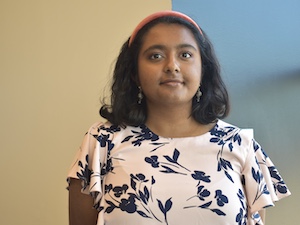 Diksha Iyer | Out for Justice
Diksha Iyer | Out for Justice
Upon arriving at my placement for the first time, I had a conversation with my supervisor to discuss onboarding and review my goals for the internship. During a lull in the conversation, I inquired about eateries in the area and wondered if we, as a group, could go out to eat sometime. My supervisor then proceeded to explain to me that I would have to bring my own lunch to work every day, unless I could afford to have food delivered to the office, because they were placed in the middle of a food desert. To examine her point, I decided to walk around the neighboring blocks just to see if I could find a small business/shop that had food items. However, the closest thing that I could find was a Family Dollar which sold food items, but they were largely processed, packaged goods without much nutritional value. This highlighted an important social issue that Baltimore residents face: lack of access to nutrition. Without a car, a way to pay for gas, and the time to go grocery shopping, many of the residents in the area surrounding my placement are forced to rely on the Family Dollar to provide them with affordable food options. “Instacarting” their groceries to their front door was not a sustainable option for them, as it is too expensive.
This issue was also brought up in a presentation in BITES, where we discussed the reason why supermarkets are largely located along the White L. The density of grocery stores is higher within the White L than in the Black Butterfly. We learned that this pattern arose because supermarkets only placed locations in areas where they felt they would make a profit, thus causing them to gravitate to richer, white, areas. This left areas, such as my placement, which are largely Black, without a source of nutritious food. The members of the community that I work with have to go the extra mile to get fresh food, and they do not always have to resources to do so. When I asked community members about methods that they use to obtain fresh food, many of them said that they lacked transportation to get to the nearest grocery store, and were therefore reliant on whatever the Family Dollar had. That first conversation with my supervisor really caused me to question the layout of the neighborhood where my placement is. Without her specifically stating that they were located within a food desert, I would have assumed that there was a grocery store or at least a restaurant within a couple of blocks. Now, I am more likely to actively (not passively!) note the available resources that a community has, rather than assume that they have them (as I did, since I grew up with a source of fresh food nearby).
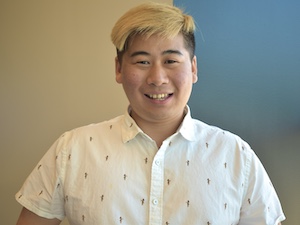 Frank Meng | BCPS Engagement Department
Frank Meng | BCPS Engagement Department
With 16 meetings, countless slides, and numerous meeting notes, my first week at Baltimore City Public Schools was busy yet enriching.
Monique (one of my supervisors) sent me a document that meticulously lists all the onboarding meetings with directors of different teams within the district schools, among other mini orientations within our engagement department. But nothing goes as planned because one of the team leads is sick and for other unforeseen reasons. Then, I was invited to a daylong training session with community school coordinators. When I first got there, I was completely puzzled by the amount of information thrown at me. I was (a little) overwhelmed. This daylong training on implementing integrated student supports for the individual is illuminating, to say the least. Going into this internship, I pride myself on the sociological insight on schooling and educational inequality. Still, the tangible student experiences and real-life examples of students’ struggles the instructor presented were striking. The entire BCPS does not have a standardized referral system that would aid teachers and staff in referring students in need to the right person. As if for now, everything lies under the goodwill of the teachers. This is not an accusation to undermine teachers and school staff’s effort to build a discrete network to help students, but a call to action to create an apparatus of a referral system that strategically addresses the non-academic needs which would set students to academic success.
Majority of my work this summer is preparing for the grand Summer Family Festival at the beginning of August. I will conduct a literature review on how to recruit, onboard effectively, and retain volunteers and create an engagement plan that makes volunteerism looks sexy. I will also analyze data from our portal to understand the quantitative aspect.
I am super excited to embark on a journey to devise the norms of volunteerism better to serve the students, schools, and communities.
